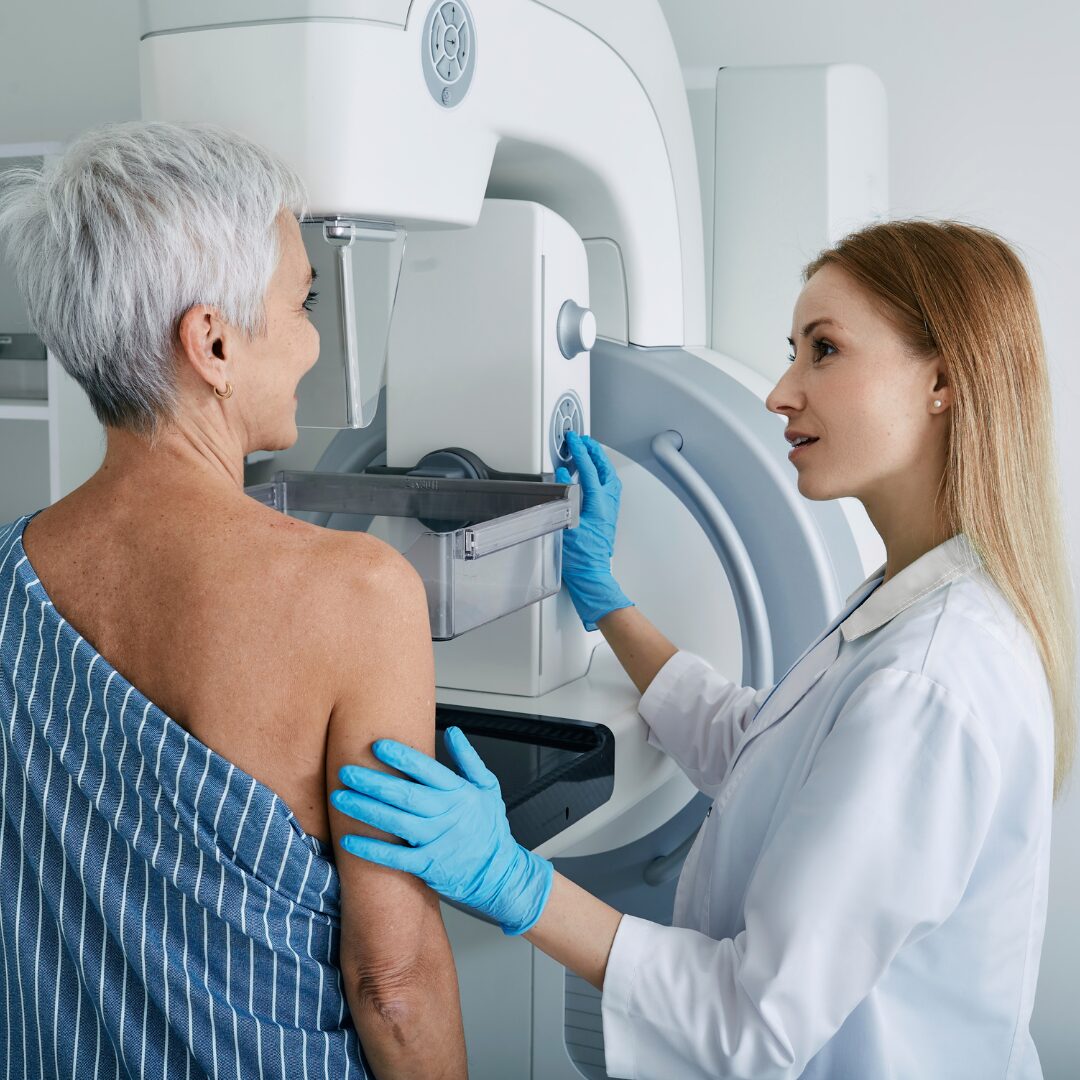Your Reproductive Healthcare Needs Evolve With Your Age.
At Obria Medical Clinics, we offer low-cost (and potentially FREE with insurance) STD testing, well-woman exams, and affordable health screenings. Book today and check out our guide below to learn how to master your reproductive health at every life stage!
Caring For Your Reproductive Health at Every Age
Understanding how to take care of your reproductive health can be confusing, especially when determining which tests are necessary at various ages. Like the changing stages of a butterfly, your care needs evolve throughout life.
At Obria, we provide low-cost (and potentially free, depending on insurance) STD testing, well-woman exams, and health screenings to help you navigate these transitions with confidence.
Explore our guide below to understand your reproductive health at every age. We’ve got you covered!
An Overview of Reproductive Health in Your 20’s
In your 20’s, your reproductive health is generally steady, with regular periods and high fertility. It’s a good time to focus on building healthy habits and begin scheduling key reproductive health exams, such as routine well-woman exams, pap smears, and STD tests if you have a new sexual partner.. Check out our post dedicated to reproductive self care in your 20’s!
Women Should Get Their First Pap Smear at Age 21, Even if They Are a Virgin
Women should begin getting Pap smears at age 21, even if they’ve never had sex. This test is important because it checks for early signs of cervical cancer, which can develop regardless of whether or not someone is sexually active. Getting this screening regularly helps catch any problems early, so they can be treated before they become serious. It’s a key part of staying healthy and protecting yourself in the long run.
Once a Month Perform a Self-Breast Exam at Home
Performing regular breast self-exams can be a method for detecting breast cancer early, when treatment is often more effective. They are also completely free, able to be performed in the comfort of your home, and easy to integrate into your monthly care routine for breast cancer screening.
The aim is to use both your eyes and hands to identify any changes in the appearance or feel of your breasts. If you observe any new changes in your breasts, be sure to consult with your healthcare professional, however in most cases, changes noticed during a self-exam are not serious.
How to Perform a Self Breast Exam
- Choose the Right Time:
- Perform the self-exam about a week after your menstrual period ends when your breasts are least likely to be swollen or tender
- If you are postmenopausal or have had a hysterectomy, choose a consistent day each month for the exam.
- Visual Inspection:
- Stand in front of a mirror with your shoulders straight and your arms at your sides.
- Look for any visible changes in your breasts, such as swelling, dimpling, or changes in the skin texture.
- Raise your arms overhead and look for the same changes. Press your hands on your hips and lean forward to accentuate any changes.
- Palpation While Lying Down:
- Lie on your back with a pillow or folded towel under your right shoulder to flatten the breast tissue.
- Place your right hand behind your head and use your left hand to exmaine your right breast.
- Again, use circular motions to examine the entire breast, from the collarbone to the ribcage and from the armpit to the sternum.
- Repeat the process on the other side.
- Check the Nipples:
- Gently squeeze each nipple to check for any discharge or changes.
- Look for any abnormalities in the color or texture of the areola (the area around the nipple).
- Report Any Changes:
- If you detect any new lumps, changes in size, shape, texture, or any discharge from the nipples, make an appointment with your healthcare professional.
- Keep a record of any changes and discuss them during your medical visit.
Check out this link for an amazing, comprehensive guide on how to perform a self-breast exam, or this guide from the Mayo Clinic!
Book a Well Woman Exam Once a Year
A well woman exam is your go-to check-up for reproductive health and is similar to an annual physical, but with a focus on the vagina, cervix, uterus, and breasts. It usually includes a professional breast exam and pap smear, plus optional STD testing if needed. Think of a well woman exam like routine car maintenance—it’s all about prevention and staying in control of your health.
Learn more about well-woman exams and expand the information below to learn what you can expect during an appointment.
What Should I Expect During My Well Woman Exam?
Medical History Review:
- Discussion of personal and family medical history.
- Review of current medications, allergies, and any health concerns or symptoms.
Physical Examination:
- General physical check-up including height, weight, and blood pressure.
- Assessment of overall health, including heart, lungs, and abdomen.
Professional Breast Examination:
- Manual examination of the breasts to check for any abnormalities, lumps, or changes.
Pelvic Examination:
- Examination of the external and internal genitalia, including the vagina, cervix, uterus, and ovaries.
- May include a Pap smear (Pap test) to screen for cervical cancer.
Sexual and Reproductive Health:
- Discussion about menstrual cycles, pregnancy planning, and sexual health.
- Screening for sexually transmitted infections (STIs) if applicable.
Potential Screening Tests:
- Blood tests to check for various health markers, such as cholesterol, glucose levels, and anemia.
- Depending on age and risk factors, other screenings may be recommended, such as mammograms or bone density tests.
Health Counseling:
- Guidance on lifestyle factors such as diet, exercise, and mental health.
- Information on preventive care and health maintenance. The well-woman exam aims to identify and address health issues early, provide preventive care, and support overall wellness.
——–
Obria Medical Clinics offer low-cost well woman exams and pap smears at our nationwide locations! Book an appointment at a clinic near you.
Make Sure You Get a Pap Smear Every 3 Years
Pap smears are a cervical cancer screening and a vital part of routine women’s health care and should begin at age 21. Think of them like a regular check-up for your cervix – this test screens for early signs of abnormal cells that could develop into cervical cancer if not addressed. Catching these changes early allows doctors to act before things progress, often preventing cancer altogether. Pap smears are often incorporated into Well Woman exams depending on your last Pap smear date. After age 30, HPV testing will also be incorporated into your Pap smear.

Obria Offers Low Cost Well Woman Exams and Pap Smears.
Take charge of your reproductive health today and book an appointment at an Obria Medical Clinic near you.
Perform STD Testing as Needed
Regular STD testing is a crucial part of maintaining your reproductive health. Testing helps detect any infections early, even if you don’t have symptoms, and ensures that you and your partners stay healthy. By making STD testing a routine part of your healthcare, you can take proactive steps to protect your health and prevent the spread of infections. It’s a responsible and empowering choice that supports both your well-being and that of your partner.
Connecting With Your Body: Understand Fertility & Family Planning
Tracking your fertility in your 20’s can help you become more in tune with your body and reproductive health. By understanding your menstrual cycle, tracking symptoms, and recognizing patterns, you’ll gain insights into your hormonal changes and overall fertility. This proactive approach empowers you to make informed choices about your health, detect potential issues early, and optimize your fertility for future family planning.
You can use apps like Clue or Flo to track your cycle and symptoms, or try Kindara and Ovia for monitoring body temperature and cervical mucus. Keeping a fertility journal is another simple option. These tools help you better understand your cycle and make informed decisions about your reproductive health.
A Guide to Reproductive Self Care In Your 30’s

An Overview of Reproductive Health in Your 30’s
Check out our complete guide to navigating reproductive health in your 30’s! In your 30’s, staying on top of routine check-ups and screenings is still key to keeping your reproductive health in great shape. A few nuances to consider:
- Maintain the Frequency of Your Self Breast Exams & Well Woman Exams: It’s typically recommended to continue having a well-woman exam annually. These regular check-ups help monitor your overall health, address any new concerns, and provide an opportunity for preventive care.
- Increased Focus on Reproductive Health & Family Planning: As you enter your 30’s, your healthcare provider may place additional emphasis on reproductive health topics, such as family planning and fertility, given that many women begin to think more about starting a family during this decade.
- Screening Updates: HPV Testing Will Be Included in Your Pap Smears: Pap smears will include HPV testing to monitor cervical health. The guidelines for the frequency of these screenings might evolve based on your health history and risk factors.
- Address Any New Symptoms Such as Changes in Menstruation or Fibroids: If you experience any new symptoms or health concerns, your doctor might suggest more frequent visits to address these issues effectively. Overall, maintaining annual well-woman exams is important for ongoing health and wellness, while additional focus may be placed on aspects specific to your 30’s.
HPV Testing In Your 30’s: What You Need to Know
While well woman exams, breast examinations, and STD testing (when needed) will remain a constant part of your womanly care, HPV testing may also be added into the mix after the age of 30. Over the age of 30, HPV testing is often used alongside Pap smears in a co-testing approach. While Pap smears detect abnormal cells on the cervix, HPV testing identifies the presence of high-risk HPV strains. Together, they provide a more comprehensive picture of cervical health and risk. Expand the information below to learn more about HPV and what to expect during HPV Testing.
What to Expect During HPV Testing
Much like a Pap smear, you’ll lie on an examination table with your feet placed in stirrups. Your doctor will insert a speculum to gently open the vaginal walls and locate your cervix. Then, using a small brush, they will collect a sample of cells from the cervix. This sample is sent to a laboratory, where it will be tested for the presence of high-risk HPV strains that could indicate an increased risk of cervical cancer.
Looking for HPV Testing in your Pap Smear or Otherwise? Obria Medical Clinics offer low-cost health screenings through our national clinic locations. Book an appointment at a clinic near you today!
In Your 30s: Why Family Planning and Fertility Matter
As you enter your 30’s, your healthcare provider may place increased emphasis on reproductive health topics, including family planning and fertility. This decade often marks a time when many women start considering the possibility of starting a family as fertility declines, making it crucial to focus on these aspects of your health. Understanding how your fertility may change as you age can help you make informed decisions about when to start a family. Regular well-woman exams in your 30’s will likely include discussions about your reproductive goals, options for family planning, and strategies to manage any potential changes in fertility. By proactively addressing these topics with your healthcare provider, you can ensure that you’re prepared for your future family planning needs.

Reproductive Care in Your 40’s and 50’s
In your 40’s, you might start experiencing menopause symptoms like irregular periods and hot flashes, and fertility begins to decline. It’s important to keep up with regular check-ups to manage these changes and discuss any family planning.
By your 50’s, menopause is usually over, so the focus shifts to staying healthy and managing post-menopausal symptoms. Keeping an eye on bone and heart health becomes crucial, and regular visits help you handle any long-term effects of menopause. Check out our complete guide to self care in your 40’s and 50’s!
While Obria Medical Clinics do not perform Mammograms, we are happy to use our network of resources to recommend a provider to you for this service.
A mammogram is a specialized X-ray of the breast used to screen for and diagnose breast cancer. Mammograms can identify breast cancer early, often before you or your doctor can feel any lumps. Early detection is crucial because it allows for earlier intervention, which can improve treatment outcomes and increase the chances of a full recovery. Regular mammograms are crucial for early detection, allowing for prompt intervention and improving treatment outcomes. They are recommended for women over 40 or those with specific risk factors, helping to identify potential issues even in the absence of symptoms.
What to Expect During a Mammogram
Arrival and Preparation:
- When you arrive for your mammogram, you’ll be asked to change into a hospital gown. It’s best to wear a two-piece outfit so you can easily remove just the top half.
Positioning:
- You’ll be guided to a mammography machine where you’ll stand in front of it. Your breast will be placed on a flat, hard surface called the plate.
Compression:
- A second plate will gently lower and compress your breast to spread out the tissue. This compression helps create clearer images and might feel slightly uncomfortable or tight, but it should be brief.
Imaging:
- The machine will take X-ray images from different angles. You’ll be asked to hold still and sometimes to hold your breath briefly while the images are taken. The entire process usually takes just a few minutes.
Completion:
- After the images are captured, the plates will be removed, and you can get dressed. You may be asked to wait a short time for the radiologist to review the images and determine if any additional views are needed.
Results:
- Your mammogram images will be analyzed by a radiologist. Results are usually sent to your healthcare provider, who will discuss them with you. If additional tests or follow-ups are needed, your provider will guide you on the next steps.
Additional Health Screenings in Your 40’s & 50’s
Women over the age of 40 and 50 may have changing aspects of health they face such as a decrease in bone density, menopause, and increased risks for diabetes and cancers. Regular check-ups and screenings help in early detection and management of these conditions, supporting long-term health and well-being. Find a family doctor you trust and ask for their input on how you can take control of your health.
Summary
At Obria, we are committed to supporting you through every life transition with affordable STD testing, well-woman exams, and comprehensive health screenings. Our goal is to make navigating your reproductive health needs as straightforward and manageable as possible.
Book an appointment at an Obria Medical Clinic near you and experience the difference compassionate care makes.
Obria Medical Clinics Offer Low-cost Pap Smears and Well Woman Exams Near You.
Experience the difference that compassionate, personalized care can make in your healthcare journey.

